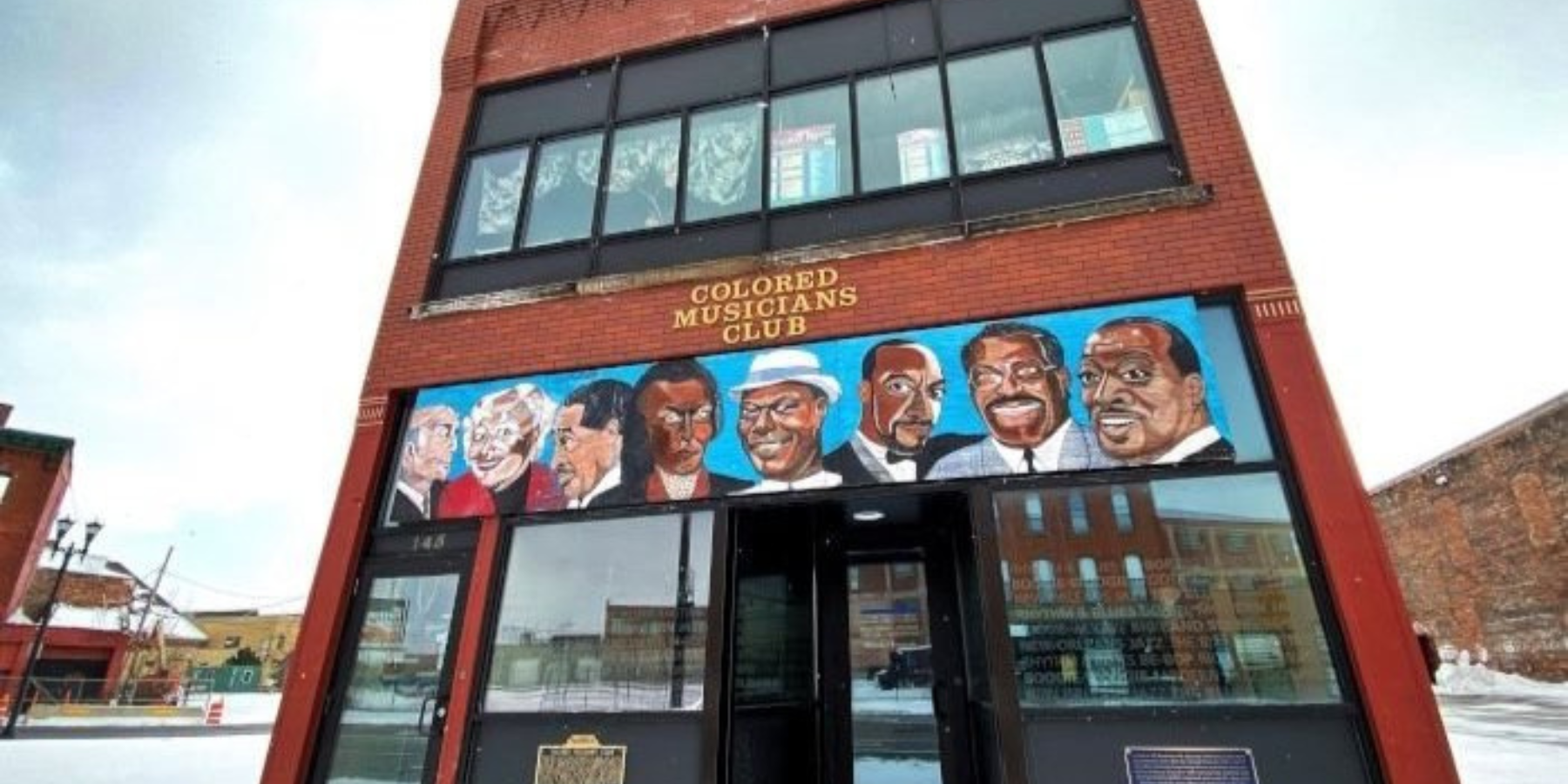The Colored Musicians Club in Buffalo is rich in history. It’s the only remaining African American musicians’ club of its kind in the U.S., and its Jazz Museum is one of only 11 standalone jazz museums in the country.
Now, the purchase of a new building across the street and the expansion of its existing building will make the Colored Musicians Club’s jazz performances, historical research, and education accessible to even more people, both those living nearby and tourists from around the world.
History of the Colored Musicians Club of Buffalo
Originally, there was only one musicians’ union in Buffalo, Local 43, which was all white and refused to allow Black musicians to join. So, in 1917, Black musicians in Buffalo formed their own union, Local 533. It provided opportunities for better-paying jobs in clubs and hotels. A year after the union was formed, its members created a social club where they could go and hang out with fellow musicians after they finished performing.
The Colored Musicians Club moved around to various locations before settling into its current home at 145 Broadway in 1934. The building contained space for performances, rehearsals, and union meetings, providing its members with professional development and friendships.
About 35 years later, Locals 43 and 533 merged. Unfortunately, the combined Local gave preference to its white musicians, and many Black musicians lost their jobs. The Club, which was a separate entity from the union, survived, giving Black musicians in Buffalo a place they could still call their own.
The Colored Musicians Club of Buffalo was, and continues to be, a major contributor to the city’s culture. It was granted historic landmark status in 1979. It has hosted performances by legendary musicians, including Louis Armstrong, Ella Fitzgerald, Duke Ellington, Nat King Cole, Cab Calloway, and Miles Davis. With the current expansion, it can carry its mission of education and the enjoyment of great music into the future.
The Renovation and New Building
The Colored Musicians Club & Jazz Museum is adding over 2,000 square feet to its existing space in a $2.95 million expansion and renovation project. A new building across the street will contain an ADA-compliant main entrance with a lobby and reception area. An elevator will go to the second floor, which will contain rehearsal and event spaces, practice rooms, and a bridge to the existing building at 145 Broadway. The Jazz Museum will remain on the original building’s ground floor, and a renovated and expanded performance space will remain upstairs. Other improvements will include increased storage space, restoration of the facade, and street repaving.
The Michigan Street African American Heritage Corridor
The Club is one of many important historical sites in the Michigan Street African American Heritage Corridor. The Corridor celebrates and preserves Buffalo’s African American history and is the home of a significant number of Buffalo cultural landmarks. It also presents cultural events, festivals, and artistic programming that draws artists, writers, actors, scholars, local residents, and national and international tourists.
One key site is the Nash House Museum, which honors the life of the Reverend J. Edward Nash, one of the area’s most influential African American leaders. The Museum also shows what life was like in East Buffalo in the early 1900s.
The Michigan Avenue Baptist Church was the first church in Buffalo to be built and owned and to host continuous worship by African Americans. Founded in 1836, it was an important community center and often the last stop on the Underground Railroad.
The WUFO Black Radio History Collective shows how Black radio in Buffalo impacted the community from the 1960s until today.
Like the Colored Musicians Club, many of the Corridor’s other museums and institutions are undergoing renovations. It’s an investment in Black culture which is expected to attract more visitors to the area. By increasing East Buffalo tourism, the Corridor will promote African American historic preservation and celebrate the area’s music and cultural diversity.
How You Can Help
These new developments at the Colored Musicians Club and other African American museums in Buffalo are part of the historic preservation Buffalo needs to honor, remember, and carry on its Black cultural heritage.
You can help keep the traditions and history of African American music alive for future generations by supporting the Club and the Jazz Museum. The building is currently closed while renovations are underway, but you can continue to enjoy the music by attending the Club’s Sunday Night Jazz Series, held the last Sunday of every month at the Buffalo History Museum. The Club also sponsors special events, such as the recent 20th Anniversary Queen City Jazz Festival. You can find details about upcoming events on the Colored Musicians Club’s website and Facebook page.
You can also support the preservation efforts of the Colored Musicians Club and Jazz Museum by becoming a member, volunteering, or making a donation.
We are proud to act as counsel to the Club, a role we have played since 1996.
